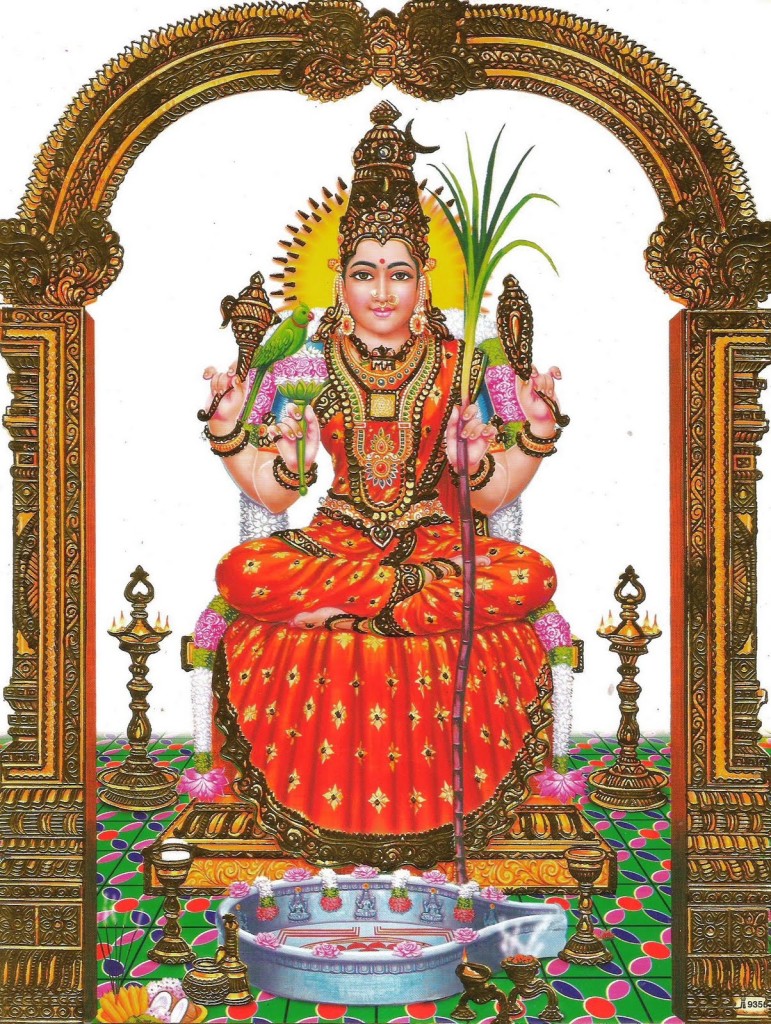In my book and also my first post on this site, I mentioned that India has a very long history with both sugar cane and distilling. For a look at the ancient symbolism of sugar, consider this picture of the Hindu goddess Kamakshi:  Kamakshi is a goddess of love, motherhood, and settled homes, and is usually depicted holding sugar cane. She isn’t the only Hindu deity with a connection to sugar – the love god Kamadeva carries a bow made of sugar cane that has a string of honeybees. The fact that peaceful avatars of love and domesticity carry sugar cane suggests an association between sweetness and harmonious relationships, a connection the candy industry was quick to exploit.
Kamakshi is a goddess of love, motherhood, and settled homes, and is usually depicted holding sugar cane. She isn’t the only Hindu deity with a connection to sugar – the love god Kamadeva carries a bow made of sugar cane that has a string of honeybees. The fact that peaceful avatars of love and domesticity carry sugar cane suggests an association between sweetness and harmonious relationships, a connection the candy industry was quick to exploit.
Hindu alchemists had mastered distilling at least 1500 years ago, and in my book I mentioned that it was surprising that there was no evidence that rum was made in the subcontinent before Europeans arrived. The eminent food and drink historian David Wondrich found that evidence, pushing the history of distilled sugar cane juice back at least the year 1316. That was the year that a Sultan of Delhi died, and contemporary Indian Historian Ziauddin Barani wrote that among the other laws of his reign, the Sultan had prohibited the distillation of “wine” from sugar cane. Since we only know that this ruler outlawed it and that was the year he died, the law was probably enacted at some earlier date, and since lawmakers rarely outlaw something that nobody is doing we must assume that the technique had become known some time still earlier. There may be other records lurking in dusty archives, so the start date for rum history may be pushed back still further in years to come.
(Incidentally, David mentioned finding this information while I was researching the section on rum and sugar for the Oxford Companion to Sweets, which was published in April of 2015 by Oxford University Press. My article begins on page 583, and it was an honor to contribute to such a worthy project.)
